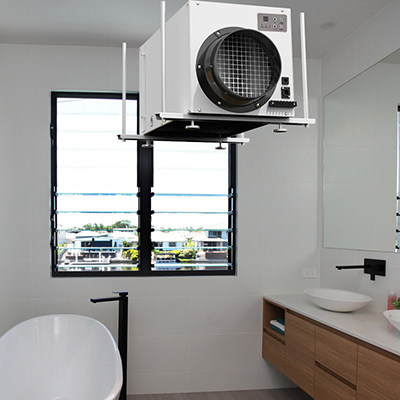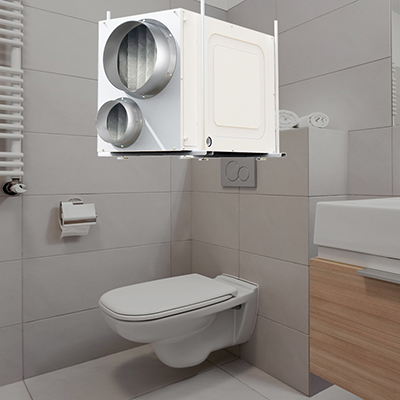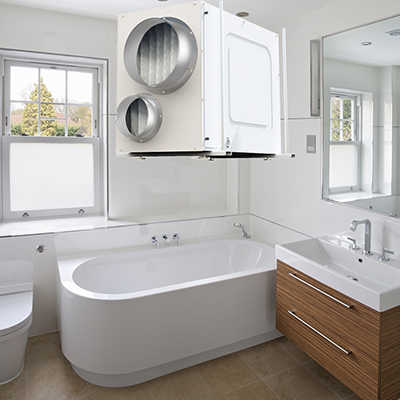Common bathroom problems
There are many problems can occur in your bathroom. The most popular problem may be the leaky faucets, mold and mildew, inadequate ventilation, etc.
Leaky faucets: Dripping faucets not only wastes water but can also be irritating. The most common cause is a worn-out rubber washer or a faulty valve. Replacing the washer or the entire faucet cartridge typically resolves the issue.
Mold and mildew: Bathrooms are prone to dampness, which can lead to the growth of mold and mildew. These fungi can cause health problems and damage surfaces. Regular cleaning and proper ventilation, such as using exhaust fans or opening windows, can help prevent mold and mildew growth.
Inadequate ventilation: Bathrooms without proper ventilation can experience excessive moisture buildup, leading to mold growth, peeling paint, and unpleasant odors. Installing or improving ventilation systems, such as exhaust fans, can help circulate air and remove excess humidity.
How does a dehumidifier stop bathroom mold?
A dehumidifier can help prevent and reduce bathroom mold growth. Mold thrives in environments with high humidity and moisture levels, and bathrooms are often susceptible to these conditions. By using a ceiling mounted bathroom dehumidifier, you can effectively control the humidity and create an environment that is less conducive to mold growth.
A dehumidifier removes excess moisture from the air, reducing the overall humidity levels in your bathroom. By maintaining optimal humidity levels (usually between 30% and 50%), you create an environment where mold is less likely to thrive.
Bathrooms are prone to condensation due to hot showers, baths, and water usage. Condensation on walls, windows, and other surfaces can contribute to mold growth. A small whole house dehumidifier helps minimize condensation by reducing excess moisture in the air.
If your bathroom has damp areas, such as near the shower or bathtub, a dehumidifier can aid in drying those areas more quickly. Removing the moisture from the air can help prevent lingering dampness that promotes mold growth.
However, it's still essential to address any existing mold issues by cleaning and removing mold growth using appropriate methods and products. Additionally, practicing good ventilation habits, such as using exhaust fans, opening windows, and wiping down wet surfaces, can further aid in mold prevention.
Regular cleaning and maintenance, including keeping your bathroom dry and well-ventilated, are crucial for preventing mold growth. Using a whole home dehumidifier in conjunction with these measures can significantly reduce the risk of bathroom mold.
How does a dehumidifier get rid of the damp smell of the bathroom?
A professional dehumidifier can help eliminate the damp smell in a bathroom. The damp smell often arises from excessive moisture in the air, which can lead to mold and mildew growth. By reducing the humidity levels, a dehumidifier helps eliminate the source of the odor and create a more pleasant and fresh-smelling environment.
A dehumidifier works by pulling moisture from the air, effectively reducing humidity levels. As a result, the excess moisture that contributes to the damp smell is removed, improving the overall air quality and eliminating the musty odor.
Even if mold and mildew are not present, high humidity can cause a stale and musty odor. The dehumidifier helps to eliminate this odor by removing excess moisture and improving air circulation, resulting in a fresher-smelling bathroom. If you want to get a whole house dehumidifier for sale, contact Preair now!
To effectively combat the damp smell in your bathroom, consider the following additional tips:
- Ensure proper ventilation: Use exhaust fans or open windows during and after showers or baths to allow moisture to escape. Proper ventilation helps prevent excess humidity and aids in odor reduction.
- Regular cleaning: Clean your bathroom thoroughly, including surfaces, fixtures, and drains, to remove any existing mold, mildew, or lingering odors. Use appropriate cleaning agents designed to tackle mold and mildew.
- Maintain a clean and dry environment: Wipe down wet surfaces, such as shower walls and countertops, to prevent moisture buildup. Repair any leaks or plumbing issues promptly to prevent ongoing dampness.
While a dehumidifier can significantly reduce the damp smell, it's important to address any underlying issues that may be causing excess moisture in the bathroom. By combining the use of a dehumidifier with proper ventilation, regular cleaning, and maintenance, you can effectively eliminate the damp smell and maintain a fresh and pleasant bathroom environment.
Post time: Jul-19-2023
 +86-13376814803
+86-13376814803  robert@hzhongtai.com
robert@hzhongtai.com 















